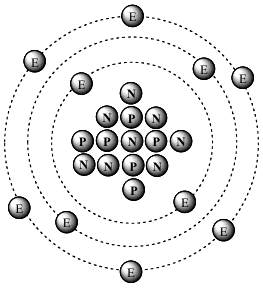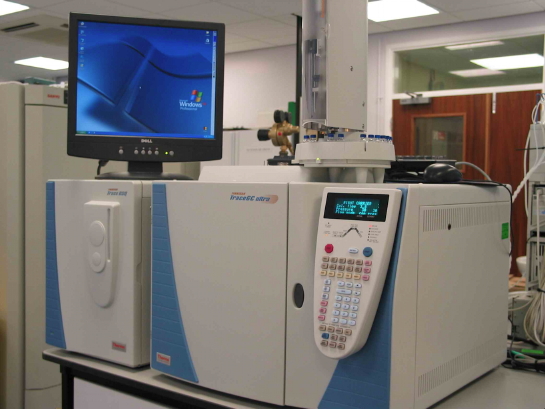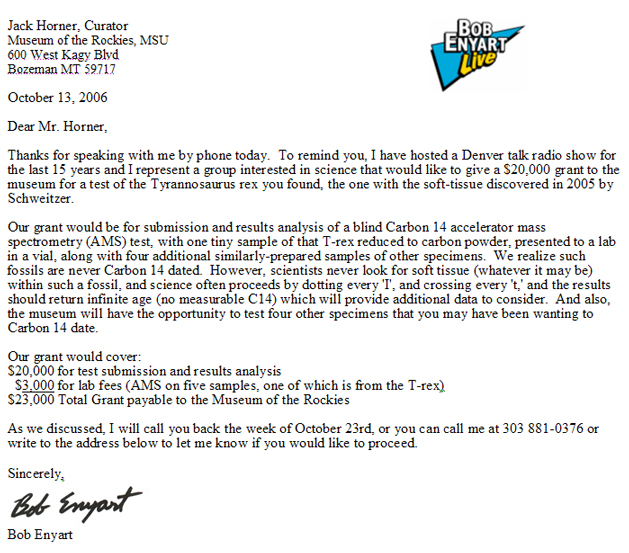 WARNING: This page contains known minor errors. On the radio in 2013 Dr. Paul Giem went through this material and helped Real Science Radio's Bob Enyart clarify some of the points and correct a couple errors, including one of his own. This is the page as it appeared, prior to Dr. Giem's grading, in June. To get the latest and correct information, just go to rsr.org/14c.
WARNING: This page contains known minor errors. On the radio in 2013 Dr. Paul Giem went through this material and helped Real Science Radio's Bob Enyart clarify some of the points and correct a couple errors, including one of his own. This is the page as it appeared, prior to Dr. Giem's grading, in June. To get the latest and correct information, just go to rsr.org/14c.
* Carbon 14 in Dinosaurs at the American Geophysical Conference in Singapore: On how to date a dinosaur, Real Science Radio's Bob Enyart interviews Hugh Miller, a member of the international scientific team that presented at the 2012 AGU geophysical conference in Singapore, the carbon dating results from five respected laboratories around the world of bones from ten dinosaurs (from the Gobi Desert in China, from Europe, Alaska, Texas, and Montana). 14c lasts only thousands of years, not millions. Yet each of these dinosaurs had plenty of radiocarbon (as expected in that virtually every relevant peer-reviewed paper on the topic confirms the presence of endogenous soft tissue in fossils; see DinosaurSoftTissue.com). With the scientific breakthroughs and discoveries coming in daily, this is a great time to be alive!
* 2013 Update: At creation.com/c14-dinos, see the great summary of this presentation from Carl Wieland, president of Creation Ministries International.
* Since Carbon-14 is EVERYWHERE It Can't Be an Anomaly: Carbon 14 doesn't lie. Yet 14c is everywhere it shouldn't be. Unless from a secondary source, like contamination or neutron capture (described below), anything millions of years old should have NO Carbon-14. However, scientists are consistently finding C-14, as reported in 2011 in the journal PLoS One for an allegedly 80-million year old mosasaur, and as reported elsewhere in natural gas, limestone, fossil wood, coal, oil, graphite, marble, the ten dinosaurs described above, and even in supposedly billion-year-old diamonds. A secondary assumption by old-earth scientists proposes that the C-14 in diamonds (coal, etc.) must have come from N-14 (or C-13, etc.) and neutron capture. Theoretical physicist Lawrence Krauss (emphasis on the theoretical) told RSR that 14c in allegedly million-year-old specimens is an "anomaly." However, an anomaly is something that deviates from what is standard, normal, or expected. Because modern carbon exists in significant quantities, far above the reliability threshold of the AMS labs doing the tests, these results can no longer be called anomalies! It is now expected that organic specimens supposedly millions of years old will yield maximum C-14 ages of only thousands of years!
 * Six Problems with the Neutron Capture Explanation
* Six Problems with the Neutron Capture Explanation
First: Unexpected C14 is found in specimens worldwide, yet 14c production (in the ground as compared to in the atmosphere) requires a lot of nearby radioactivity to produce appreciable amounts of 14c by neutron capture. However, terrestrial radioactivity is concentrated, with the vast majority of it occurring in the continental crust. (On RSR Lawrence Krauss confirmed this well-documented observation.) Ninety percent of Earth's radioactivity is in 1/3rd of 1% of it's mass.
Second: Radioactivity is relatively scare even in the continental crust, at least as documented by this U.S.G.S. report for enormous swaths of land.
Third: Presented at the 2012 AGU Singapore conference, there was less than 20 parts per million of uranium and thorium in the dinosaur bones that contained large quantities of modern carbon, so much that it registered mid-range in the AMS (accelerator mass spectrometry) capabilities. Also, Uranium mines where the uranium content is 18% yield carbon specimens which have 1% 14c.
Fourth: In a meeting with RSR, a geologist with a degree from Colorado's School of Mines who has a background in nuclear physics (who also spent years bombarding various elements with neutrons to make isotopes for industry) told RSR that Carbon does not easily absorb neutrons because it is the heavier elements beginning with Sodium that readily capture neutrons. Further, while it is relatively unlikely that a Carbon atom will capture a free neutron, industrial processes use Carbon to slow down neutrons, whereas they use heavier elements, typically starting with Silicon, which is almost double the atomic weight of Carbon, for neutron capture. Creating 14c from Nitrogen, then, has essentially the same problem, because Carbon and Nitrogen are neighbors on the periodic table.
Fifth: Dr. Paul Giem writes that, "since nitrogen-14 captures neutrons 110,000 times more easily than does carbon-13," samples with even tiny amounts of nitrogen would dramatically increase carbon dates, such that, "If neutron capture is a significant source of carbon-14 in a given sample, radiocarbon dates should vary wildly with the nitrogen content of the sample." Giem adds, "I know of no such data."
Sixth: Recognizing that crustal radioactivity is generally relatively scare (as documented in this U.S.G.S report for coal, basalt, shales, granite, fly ash, etc.), Dr. Jonathan Sarfati builds upon Dr. Giem's research arguing that neutron capture could account for less than one 10,000th of the C-14 in diamonds (see these peer-reviewed calculations). Therefore, there would have to be thousands of times more uranium, thorium, etc. throughout the earth's crust everywhere that these globally dispersed materials are found.
* Five Problems with the Contamination Explanation: Both mathematical analysis of the data, and the nature of some of the specimens, indicate that contamination does not solve the radiocarbon problem for old-earth geologists.
First: While dinosaur bones, coal, and other specimens could easily be contaminated, diamonds, the hardest naturally occurring substance in the world are naturally resistant to contamination. Thus, when significant quantities of 14c are found, for example, in coal and dinosaur bones, as well as in diamonds, the least contamination-resistant 14c-rich specimens provide a constraint on the likelihood of contamination as a primary source for the modern carbon in other similarly-dated specimens. Thus the radiocarbon content of diamonds is all the more compelling and important, and especially when the specimens are mined from a quarter-of-a-mile below the surface, insulated from our 14c-bearing atmosphere. Contamination is not only far more unlikely within deep-mined and unbroken diamonds, but because of the unique physical composition of diamonds, various kinds of contamination could be more readily detectable.
Second: Just as forensic accountants can often determine when a criminal business has cooked its books merely by doing a Benford statistical analysis of the numbers, so too mathematicians have demonstrated that statistical analysis can indicate whether scientific data is likely a result of measurement errors. So evolutionists typically claim that all this 14c results from contamination, but statistical analysis indicates that when plotting erroneous dates (as from contamination), the data should fit a normal curve. However, it does not. As documented by Rick Sanders in A Case of "Missing" Decay in CRSQ, the distribution provides significant evidence that the radiometric ages do not result from contamination errors. Regarding the results from the ten dinosaurs dated (as above), of course, bacteria do not make collagen. And if the 14c came from contamination, for example, one would not expect the contamination to so equally affect the bioapatite and the collagen.
Third: The above paper indicates that where sampled, the ground area has decreasing 14c with distance from the dinosaur bone, indicating that modern carbon is leaching out of the bone (which is not problematic), but, most significantly, not seeping into the bone.
Fourth: Dinosaur bone showing 5pmc means that five percent of the carbon in the bone needs to be replaced with modern carbon, which high level of contamination would very possibly be detectable.
Fifth: Dinosaur bone showing 5pmc means that, because the 14c half-life is so brief, 5,730 years, if the radiocarbon is from contamination that occurred 6,000 years ago, a full five percent, i.e., 1/20th of the bone must have been replaced. (See below, 42 minutes into Paul Giem's 2013 presentation.) If the contamination occurred 12,000 years ago, 10% of the bone would have to be replaced; 18,000 years ago, 20%; if it occurred 24,000 years ago, 40% of the bone would have had to be replaced, and if (in the evolutionary perspective) a mere 30,000 years ago, 80% of the bone would have to be replace by a contamination process. Thus, where researchers find both soft tissue and 14c, especially in small bones as with the mosasaur, the claim that the biological tissue is dinosaurian and is not contamination works exactly against the claim that the 14c is from contamination.
* RSR Proposed Contamination Falsification Experiments: In addition to work already done documenting appreciable 14c levels even in contamination-resistant specimens, we recommend a few experiments including a couple proposed by RSR friend David Willis:
1) Obtain newly recovered and carefully protected dinosaur bones excavated from deeply-buried strata.
2) Confirm that the bones do not have appreciable quantities of radioactive material.
3) Then radiocarbon date specimens extracted from twenty locations within a single bone, including from the surfaces, near the surfaces, and midway toward the center, and from the center of the bone. The young earth model predicts the finding of significant quantities of carbon 14 throughout the bone. The evolutionary model would predict no modern carbon in such a bone, but as a secondary assumption, if 14c is found, since any contaminating material would have to pass through the outer layers of the bone to get into the center, the contamination explanation would expect to measure generally decreasing percentages of 14c from the outside to the center of each individual bone.
4) Repeat.
A second experiment, beginning as above, would be to date a small diameter bone and a larger diameter bone from the same dinosaur. Getting the same dates would help rule out contamination because the smaller bone will have a larger surface to volume ratio which, if contamination were a significant factor, should result in higher percentages of modern carbon.
A third experiment that could falsify contamination as a possible source of 14c involves:
1) Obtain diamonds from the Popigai Astroblem mine. With the announcement that these reserves in Siberia contain diamonds that are "twice as hard as normal", these will be ideal for 14c dating because their natural hardness would further rule out contamination. Also, evolutionary geologists claim that these diamonds were already ancient when, allegedly 35 million years ago, a meteor impacted above them.
2) Confirm that the bones do not have appreciable quantities of radioactive material.
3) Radiocarbon date the Popigai Astroblem diamonds (including specimens near the surface and at the center). The evolutionary model predicts no (carbon dead) 14c. The young earth model predicts significant quantities of 14c measurable throughout the diamond.
4) Repeat.
A fourth experiment that could falsify contamination as a possible source of 14c involves radiocarbon dating of allegedly 100 million-year-old amber, by selecting pristine specimens, the condition of which may also help to rule out contamination.
* RSR Proposed Neutron Capture Falsification Study: Published by RSR on Aug. 25, 2012. Ninety percent of Earth's radioactivity is concentrated in 1/3rd of 1% of it's mass (within the continental crust). Consider then, the fossil remains of organisms that had lived near the surface but that have been long buried in ocean sediments. If neutron capture were responsible for much of the unexpected 14c, then collectively, such ocean specimens, collectively, should have far less 14c than specimens excavated on the continents. Further, more analysis should be done on relevant specimens excavated from uranium mines, comparing their radiocarbon percentages to similar (in type and estimated date) specimens gathered away from uranium mines. Thus, marine deposit specimens and uranium mine specimens can function as control groups.
* What About Carbon 14 Dates Older than Genesis?: Carbon 14 dating involves major unsubstantiated assumptions, including the stability of the 12c/14c ratio over millennia, which the public is almost universally unaware of. Out of every trillion Carbon atoms in the atmosphere, only about one is 14c. While the isotope's decay rate can disprove any claimed age of over 100,000 years if more than a single atom of originally-absorbed 14c remains, invalid older dates can are expected with a small change in this ratio. Further, significant unknowns, both in the rates of 14c production in the atmosphere, and in the Earth's enormous geologic upheaval in the past, could have altered the 1,000,000,000,000-to-1 ratio.
* A Less Familiar Source of 14C: Though it may be an extremely negligible source, of the various emissions from radioactive decay (alpha particles, beta particles, etc.), from a particular decay chain, it is possible that an entire 14c atom (6P, 8N, 6E) can be emitted as a unit in a single step. If you know of a web page where this is described, please email that link to Bob@kgov.com. Thanks!
* 14C in Other Dinosaur-layer Bones: RSR offered famed paleontologists Jack Horner and Dr. Mary Schweitzer a grant of $23,000 to carbon date their biological dinosaur tissue (YouTube video below), which money RSR saved thanks to Hugh Miller (above) and the rare studies that are just beginning to be reported finding significant quantities of modern carbon in allegedly ancient fossils that still contain original soft tissue! A Mosasaur shown by researchers to have original biological material and not contamination, also contained five percent modern carbon! See more at Round Four of our RSR debate with atheist AronRa. We have a young earth!
* Earth's Decaying Magnetic Field Affects 14C Dating: Long-term, authoritative, and worldwide measurements show that the Earth's magnetic field is decaying rapidly (as NASA's data shows is also true of Mercury). Our planet's more powerful magnetic field in the past better shielded Earth from cosmic rays, resulting in less Carbon-14 production. This means that carbon ages of specimens from past millennia and even from only centuries ago need to be adjusted downward. So apart from adjustment for the exponentially decaying magnetic field, specimens are therefore younger than their radiocarbon age indicates. For, living with a stronger field, plants and animals absorbed less radiocarbon. So, in addition to the evidence for rapid radioactive decay at the time of the global flood, the Earth's decaying magnetic field means that specimens are generally younger than claimed by Carbon-14 dating. This effect may be significant going back even only to the time of Christ, and might also be a factor in why 14c dating of the artifacts of the Pharaohs were not as helpful as had been hoped for in resolving debates in chronology among Egyptologists.
* Amber 14C Dating Prediction: RSR predicts that even allegedly 300-million-year-old amber will show significant quantities of modern carbon. See more at RealScienceRadio.com/predictions.
* Left-handed Amino Acids: Scientists have been surprised to find primarily left-handed (i.e., unracemized) amino acids in specimens allegedly hundreds of millions of years old. Once an organism dies, its amino acids begin to return to their inanimate, 50/50 ratio of right- and left-handedness. Duane Gish, highly qualified to address the topic, points out that factors affecting a specimen, including variation in temperature and especially pH (acidity vs. alkalinity), can dramatically speed up the rate of racemization. Merely giving the old-age assumption the benefit of the doubt, however, by assuming the lowest reasonable alkalinity and temperatures for the life of the specimen, retains amino acid racemization as a powerful tool for falsifying million and billion year dates, especially when combined with extant soft tissue and plentiful radiocarbon. See more at RSF's List of Not So Old Things.
 Today’s Resources: Get the Spike Psarris DVD What You Aren't Being Told About Astronomy and Vol. II, Our Created Stars and Galaxies! Have you browsed through our Science Department in the KGOV Store? Check out especially Walt Brown’s In the Beginning and Bob’s interviews with this great scientist in Walt Brown Week! You also might enjoy Bob Enyart’s Age of the Earth Debate against a well-known geophysicist and a University of Colorado mathematician who are members of the Denver chapter of Reasons to Believe. And Bob strongly recommends that you subscribe to CMI’s tremendous Creation magazine!
Today’s Resources: Get the Spike Psarris DVD What You Aren't Being Told About Astronomy and Vol. II, Our Created Stars and Galaxies! Have you browsed through our Science Department in the KGOV Store? Check out especially Walt Brown’s In the Beginning and Bob’s interviews with this great scientist in Walt Brown Week! You also might enjoy Bob Enyart’s Age of the Earth Debate against a well-known geophysicist and a University of Colorado mathematician who are members of the Denver chapter of Reasons to Believe. And Bob strongly recommends that you subscribe to CMI’s tremendous Creation magazine!
* Debate Announcement: Bob has just posted the final round conclusion to our RSR debate with anti-creationist AronRa on the British atheist website, League of Reason. For links to the on-air and written debates, round by round, see kgov.com/AronRa. And click here for Bob's final round post!
* YouTube Video of the RSR Offer to Jack Horner: Steven Spielberg had famed paleontologist Jack Horner on the set as a technical advisor during the filming of all three Jurassic Park blockbuster movies. This YouTube video presents the Real Science Radio phone call by which we offered Jack Horner a grant of $23,000 to carbon date either their Wankel T. rex or their pregnant (at the time of its death) B. rex.
